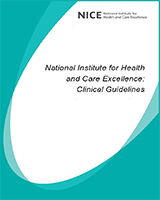From: Chapter 41, Cost-effectiveness analyses

NCBI Bookshelf. A service of the National Library of Medicine, National Institutes of Health.
| Study | Population | Analysis | Prognostic variable | Confounders | Outcomes | Limitations |
|---|---|---|---|---|---|---|
|
Alameda 20095 Retrospective cohort study | n=243 patients with congestive heart failure and cardiac arrhythmia with major complicatio ns or comorbidity discharged from the Department of Internal Medicine, 1 hospital, Spain | Multiple regression for length of stay, logistic regression for other primary outcomes |
Medical outlier (admitted to a ward different from the internal medicine ward; outliers transferred to the internal medicine ward were included) Versus. No medical outlier (admitted to the internal medicine ward) |
Age Sex Diabetes mellitus Hypertension Coronary heart disease Cerebrovascul ar disease Chronic obstructive pulmonary disease Cancer Cognitive impairment before admission Serum creatinine Haemoglobin PaO2 Serum albumin at admission Nursing home resident Previous hospital stay within 12 months Weekend/bank holiday admission |
Mortality Length of stay Serious adverse events (Intra-hospital morbidity - infection, haemorrhage) | No adjustment for comorbidity; all patients had complication/comorbidity |
|
Perimal-Lewis 2013156 Retrospective cohort study | n=19,923 patients admitted and discharged by the general medicine service (university hospital, Australia) | Poisson regression |
Outlier (not treated within a ‘home ward’ for the general medical unit allocated to care for the patient) Versus. Inliers (treated within a ‘home ward’ for the general medical unit allocated to care for the patient; patients under the care of GM but housed in the intensive care, high dependency or coronary care units were included as inliers) |
Age Charlson index Gender Length of time spent waiting for a bed in ED |
Mortality (hospital mortality) Length of stay (statistic not reported) | No adjustment for case mix |
|
Santamaria 2014173 Prospective cohort study | n=58,158 patients admitted (university tertiary hospital, Australia) | Zero-inflated negative binominal regression |
Outlier (any time spent outside the home ward) Versus. Non-outlier (no time spent outside the home ward; time spent in an intensive care or coronary unit was included as non-outlier) |
Age Predicted mortality (calculated using diagnostic codes and Charlson Comorbidity index) Interhospital transfer Same-day admission Neurosurgery unit Cardiothoracic surgery unit General surgery unit Nephrology unit General medicine unit | Serious adverse events (emergency calls) | Population indirectness – all patients including surgical |
|
Serafini 2015179 Retrospective cohort study | n=3828 patients admitted to internal medicine or geriatrics (one hospital, Italy) | Not reported |
Outlier (patients admitted in beds outside of medicine or geriatrics) Versus. Non-outlier (inward patients) |
Total number of admissions Gender Age Degree of dependence Length of stay Outlying location (medical or surgical) Diagnosis related group at discharge Readmission within 90 days | Mortality (hospital mortality) | No adjustment for comorbidity |
|
Stowell 2013187 Matched pair cluster study | n=483 patients outlying in one ward but under the responsibility of another ward matched with nonoutlying patients consecutively included among all patients hospitalised during the study period | Student, chi-square, Fisher exact test and Mann and Whitney test |
Outlier (patients outlying in one ward but under the responsibility of another ward) Versus. Non-outlying patients | Matched for age, sex and reason for admission |
Mortality (90 day) Length of stay (median and range) Serious adverse events (transfer to intensive care) ED 4 hour transit time (median and range) |
No consideration of comorbidity Population indirectness – all patients including surgical |
From: Chapter 41, Cost-effectiveness analyses

NCBI Bookshelf. A service of the National Library of Medicine, National Institutes of Health.